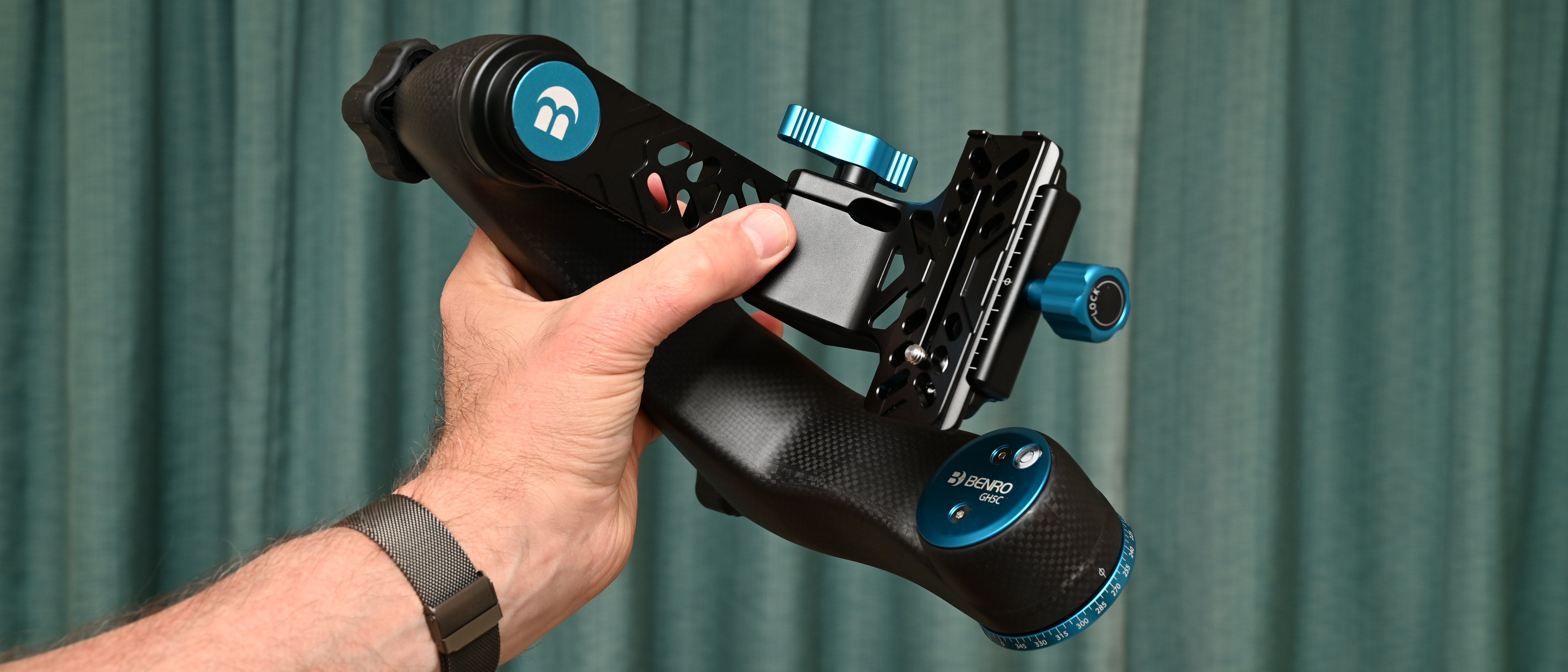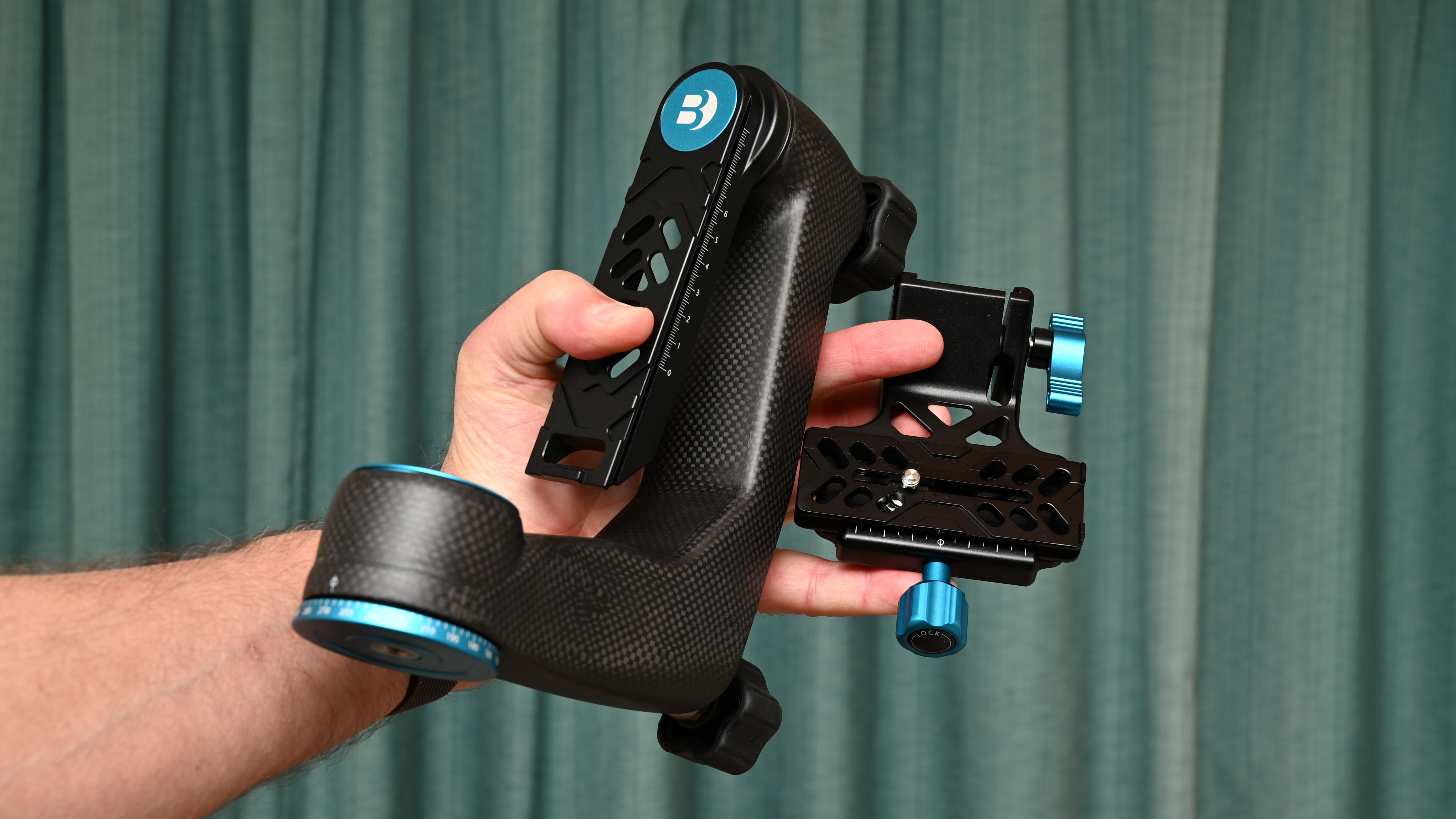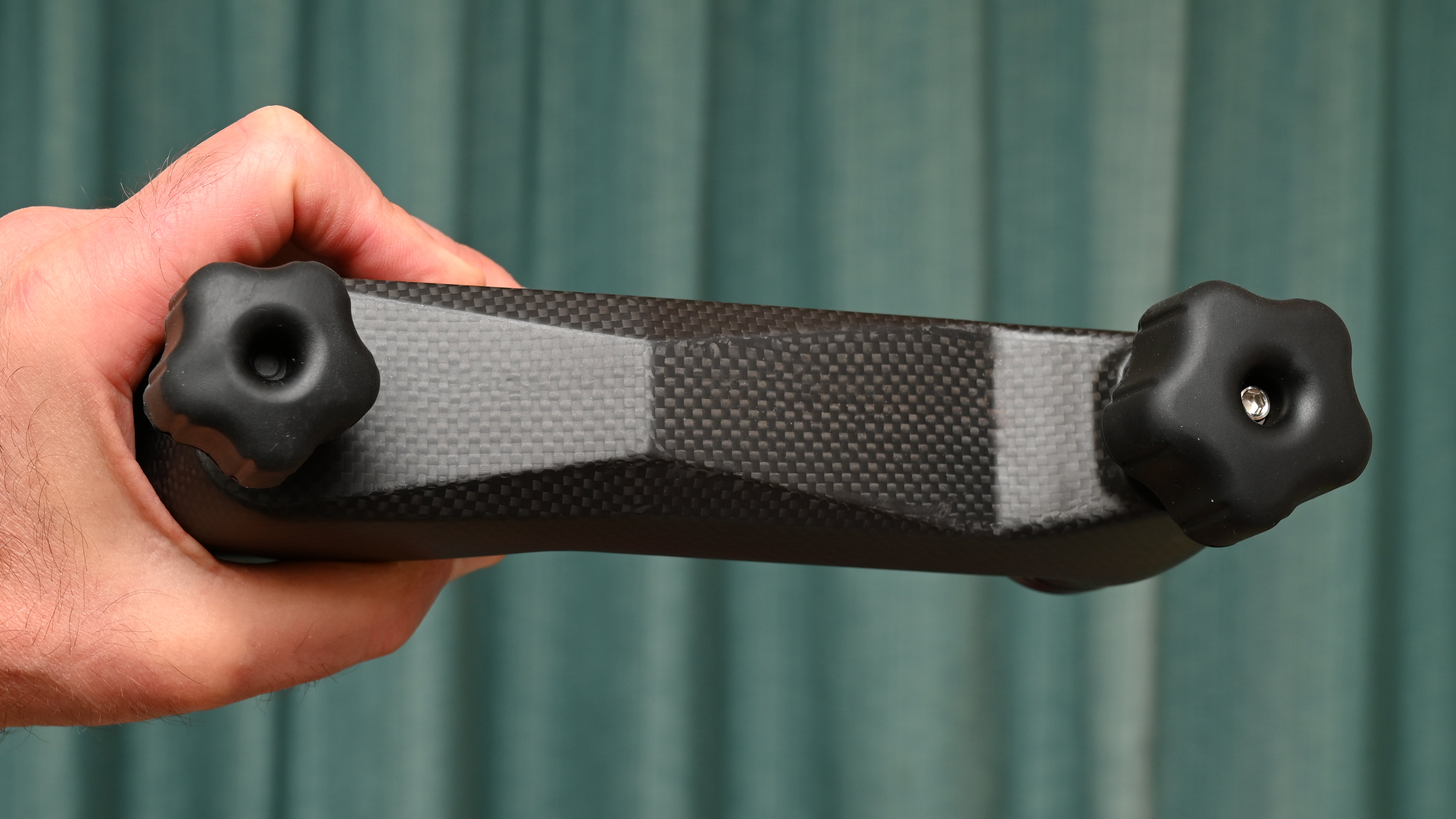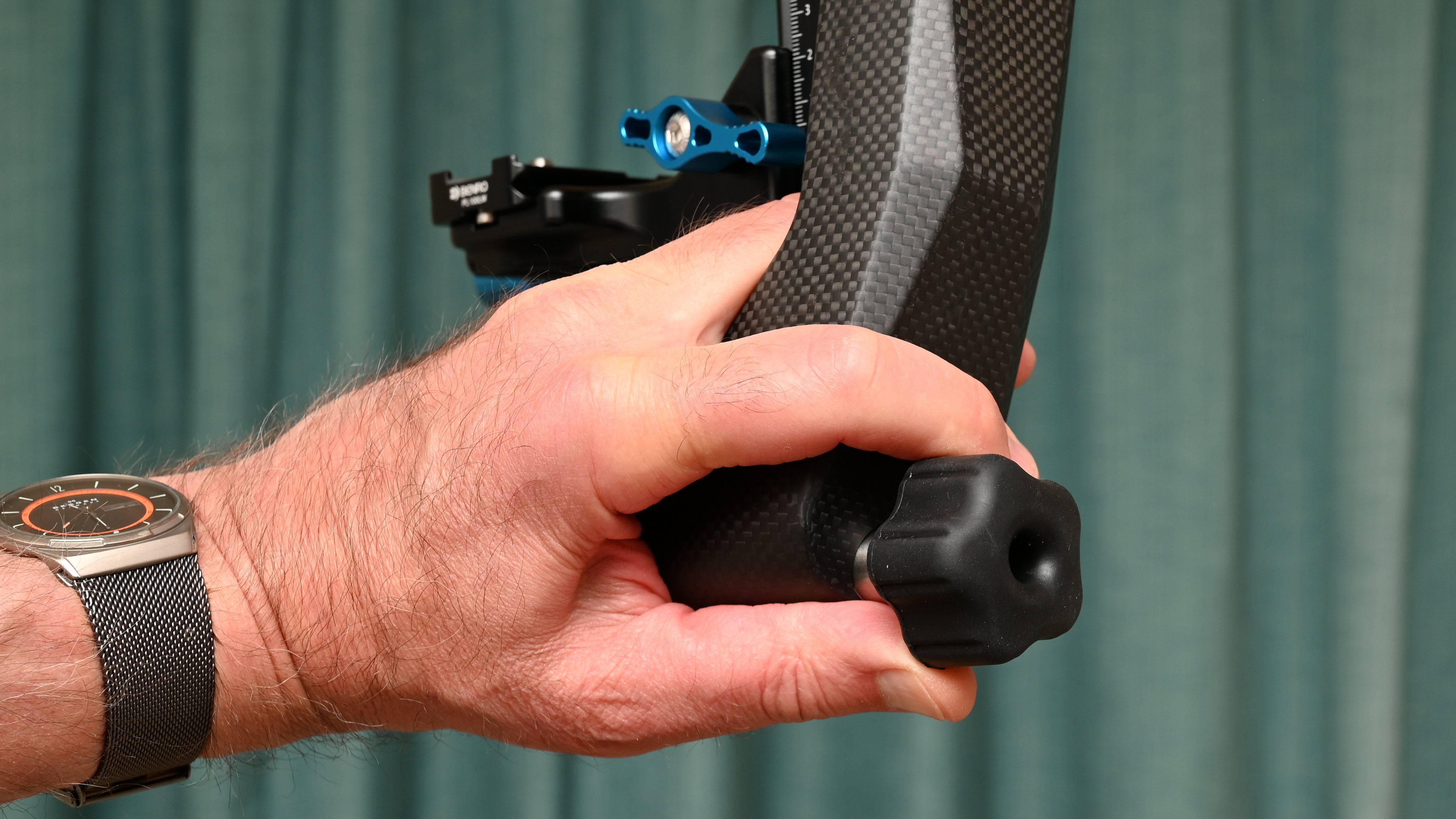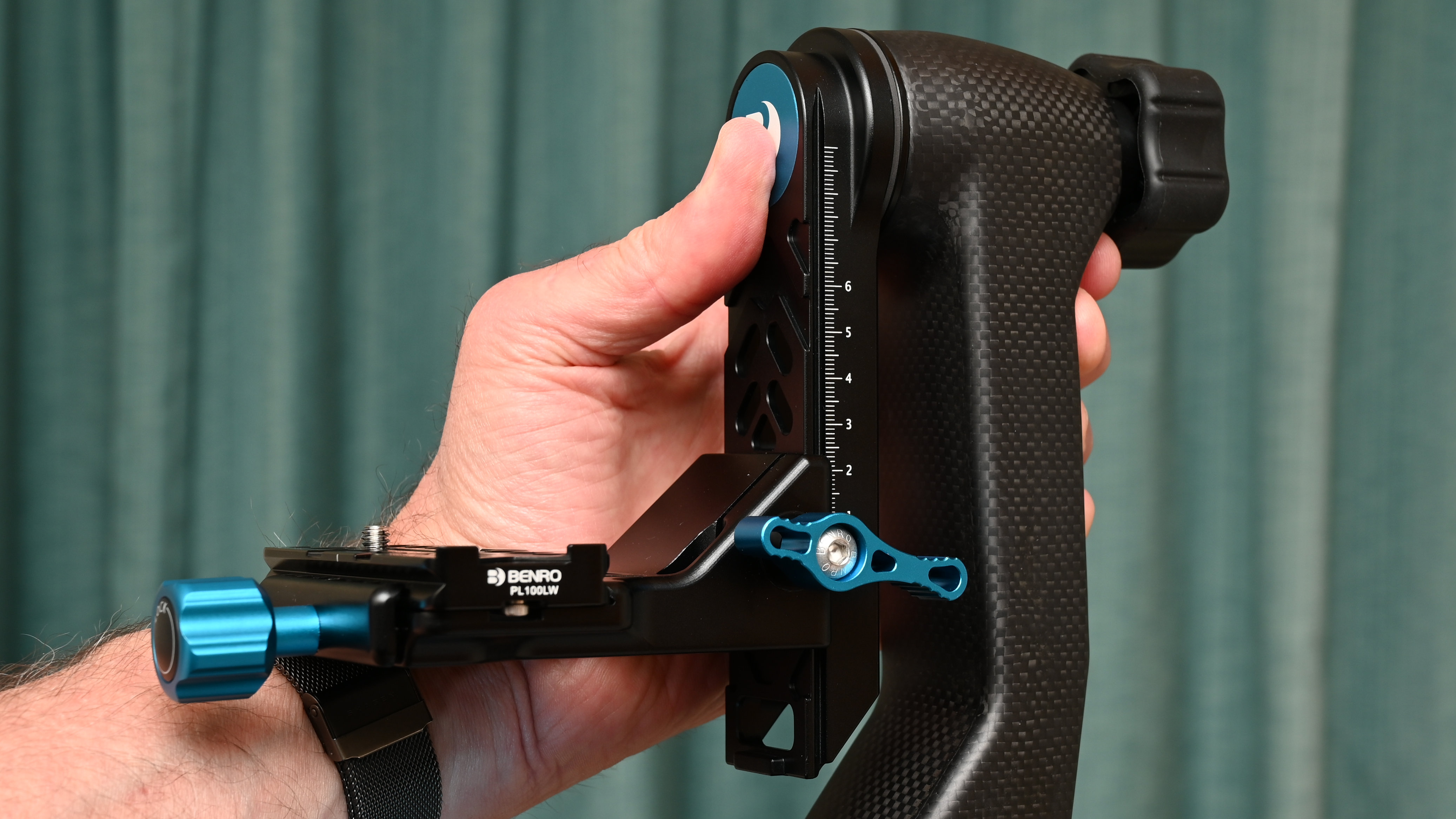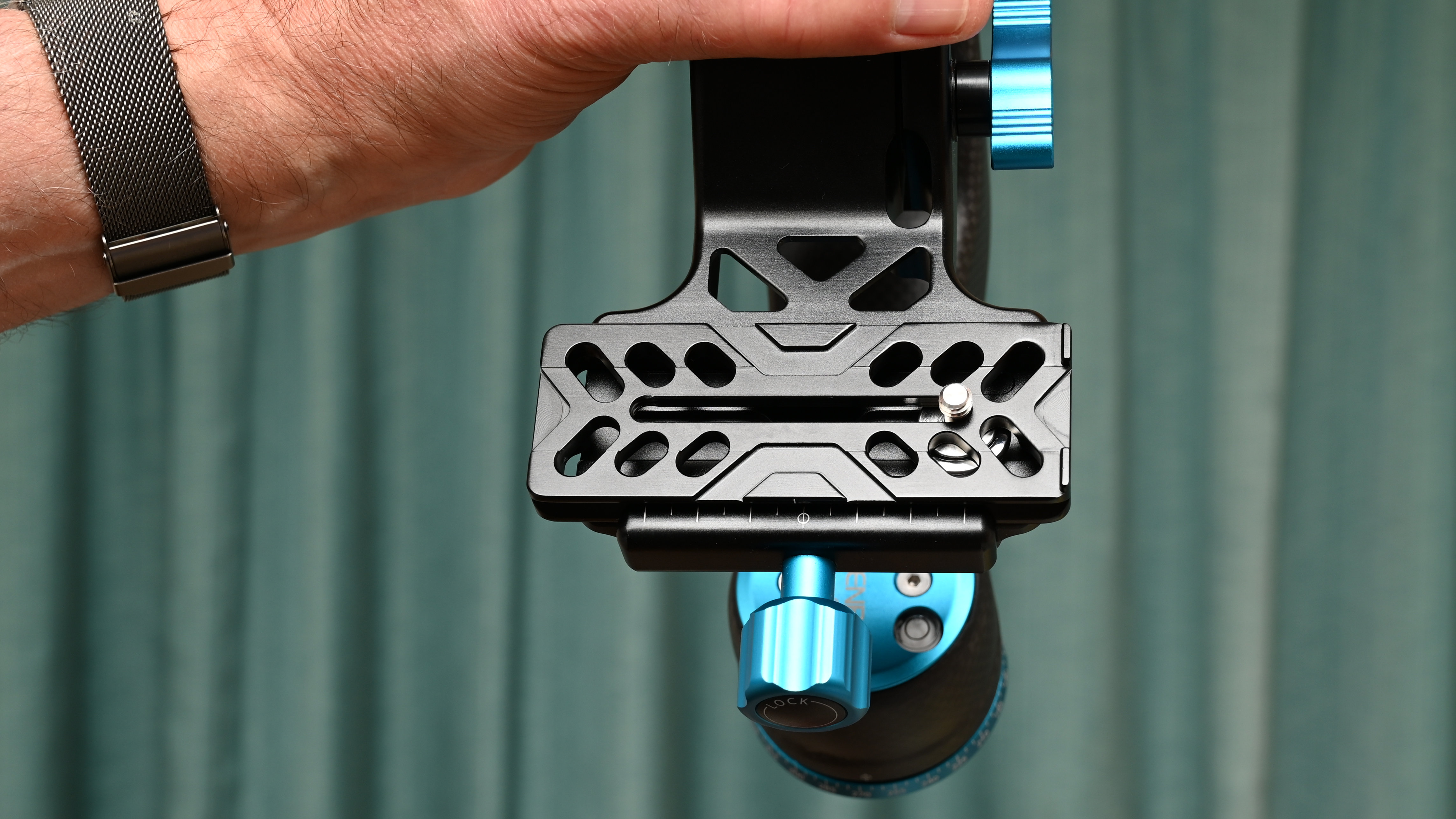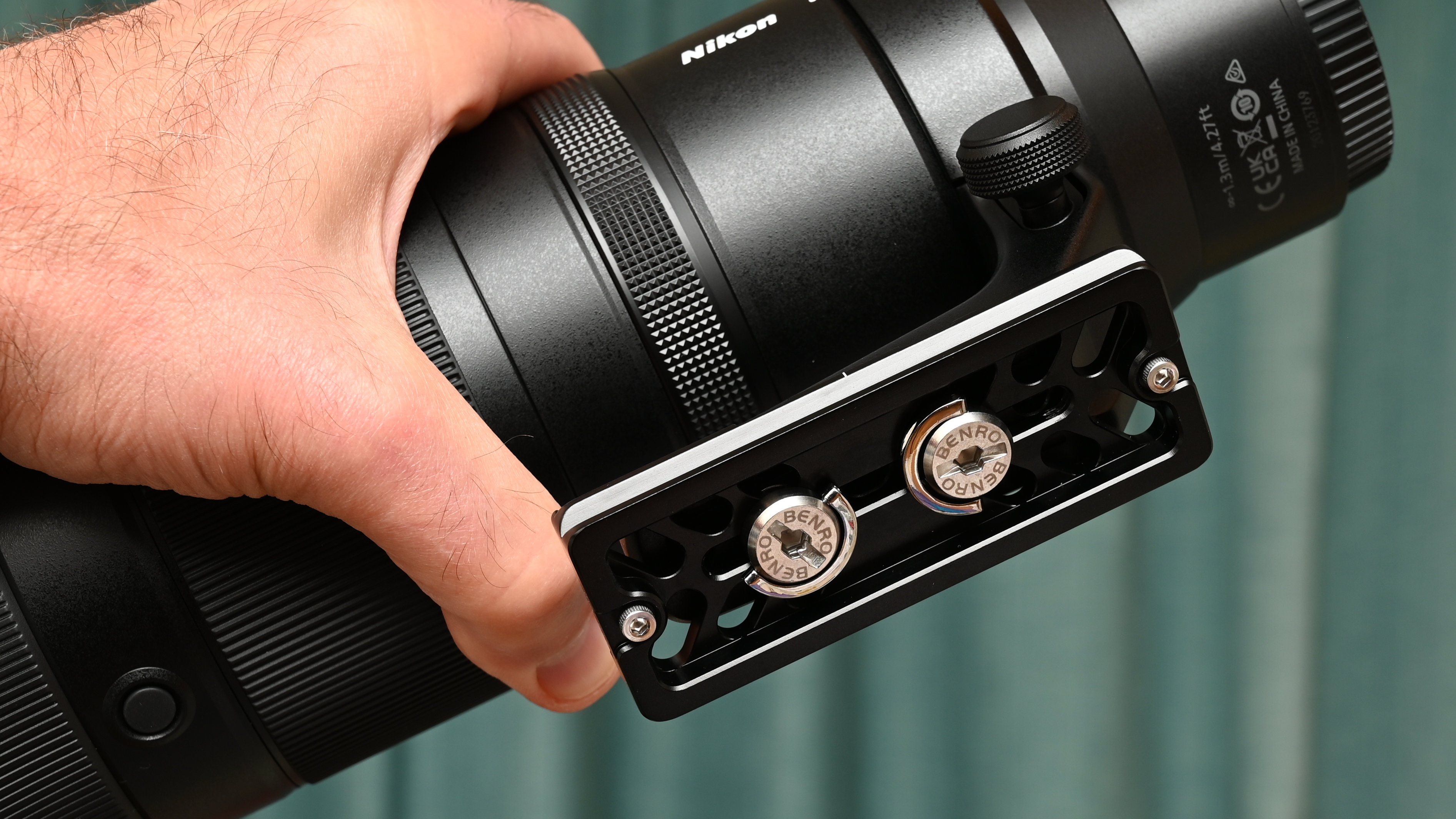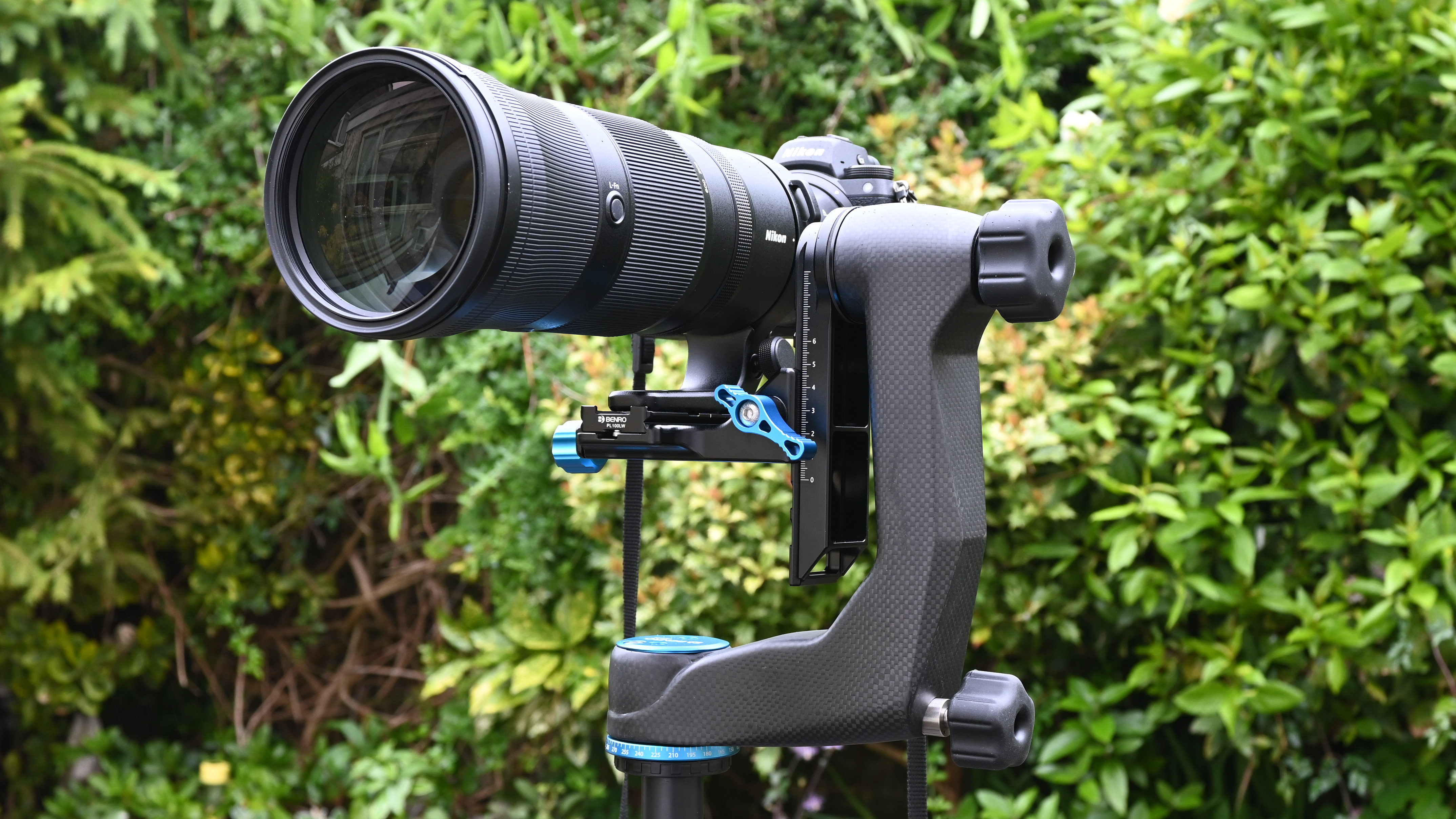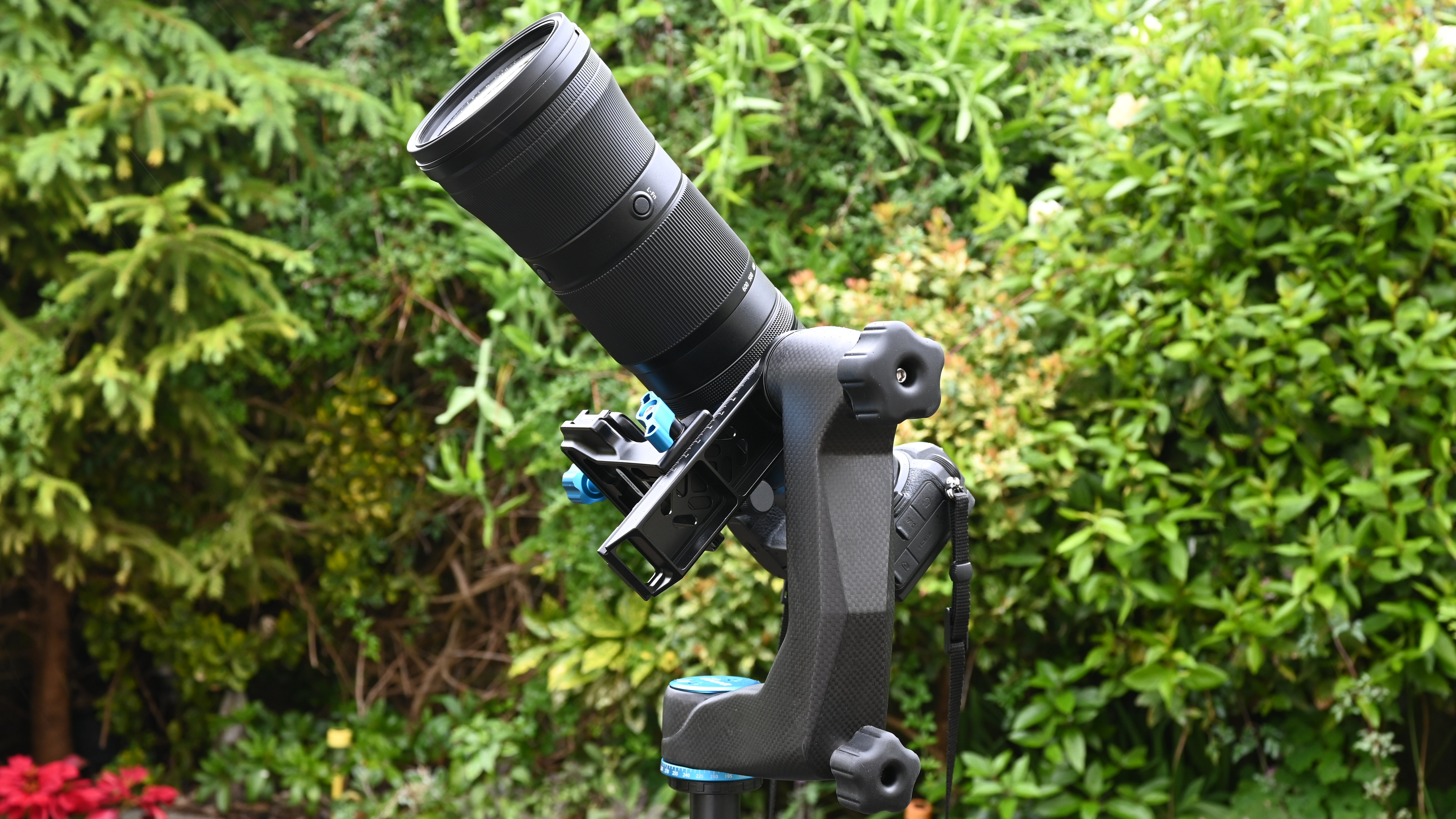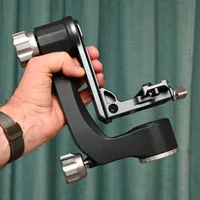Digital Camera World Verdict
The Benro GH5C gimbal head is a gamechanger for action, sports and wildlife photography. It makes long heavy telephoto lenses feel weightless, while enabling a full and effortless range of movement. It’s typically pricey to buy but the luxury carbon fiber build delivers superb quality and performance.
Pros
- +
Makes heavy lenses weightless
- +
Free-flowing movement
- +
Luxury carbon fiber construction
Cons
- -
Typically pricey
Why you can trust Digital Camera World
Rock up to an air show with your heavyweight camera and telephoto lens combo and you might be in for a tiring and uncomfortable day out if you’re shooting handheld. The same applies to photographing birds, wildlife, action, sports and anything else that involves tracking movement for long periods of time. That’s especially true if the object you’re tracking is moving up and down as well as from side to side.
One solution is to use a monopod but, if you’re like me, you’ll find that while it supports the weight of a heavy lens, tilting and panning feels less than intuitive. Engineered to be one of the best gimbal heads on the market, the Benro GH5C sets out to transform your shooting experience with heavy lenses, effectively making them weightless while enabling a full and fluid range of movement. It’s almost like an anti-gravity machine.
Benro GH5C gimbal head: Specifications
Material | Carbon fiber |
Max load | 30kg / 66lb |
Weight | 1.08kg / 2.38lb |
Height | 24.5cm / 9.65in |
Base diameter | 60.4mm / 2.38in |
QR plate | Arca-Swiss type |
Benro GH5C gimbal head: Price
Good gimbal heads don’t come cheap and this Benro is one of the more expensive examples of the breed. Even so, I feel that the selling price of around $435 / £485 / AU$900 is very reasonable, given the exotic carbon fiber construction, which sets it apart from the usual aluminum or magnesium alloy fare.
Benro GH5C gimbal head: Design & Handling
Benro has been in the business of making tripods for almost 30 years. Naturally, a good set of legs isn’t much use without a smart head and, sure enough, I’ve been impressed by Benro’s range of tripod heads which often combine design flair and innovation with quality materials and precision engineering, like the Benro GD3WH Geared Head and Benro FS20PRO Video & Foto Head. The GH5C that I’m reviewing here is very different from both of those, firstly because it’s designed as a gimbal head for heavyweight telephoto lenses, and secondly because it’s made from carbon fiber.
The Benro comes out of its smart blue retail box with fitted foam insert in two pieces, plus a bag of bits. The bag of bits in question includes a couple of extra 1/4in fixing screws for the quick-release plate, a 1/4in to 3/8in adapter (more on those later), an Allen key and an instruction booklet. The two main components of the gimbal head are easy to join together in no time at all.
Once you’ve joined the two separately packed pieces together, the gimbal head is pretty much ready to roll but I couldn’t help taking a few minutes to be thoroughly impressed by the look and feel of its carbon fiber construction. Akin to a specialist automotive part from a top-spec racing car, the Benro is more lightweight than it looks and doesn’t feel cold to the touch, unlike metal gimbal heads. That can be a big bonus in terms of handling if you’re out on a long shoot in chilly weather.
Typical of Benro kit, this gimbal head has blue accents and, starting at the bottom, these include the panning base. It’s calibrated through its whole 360 degrees of operational movement, with numbered markings at 15-degree intervals and incremental lines every 5 degrees.
The best camera deals, reviews, product advice, and unmissable photography news, direct to your inbox!
At the back of the lateral section of the main L-shaped arm is the lock/release knob for the panning clamp. It’s comfortably large and rubberized for a secure grip, and requires very little rotation for locking off the base plate or enabling panning.
Another feature that’s highlighted with a blue accent is the top of the panning mechanism on the base of the main L-shaped arm, which includes a bubble level. This can come in handy for leveling the legs of your tripod before you start shooting, especially if you’re working on tricky and uneven terrain.
The swinging arm is again calibrated, this time in millimeters along its vertical height. If you’ve got a good memory for numbers, this enables you to quickly and easily return to the ideal height adjustment for your lenses, so that the height is centered in line with the tilting pivot at the top of the gimbal. The tilt mechanism has a similar lock/release knob as the panning mechanism, but this time it’s larger and placed at the top of the main bracket instead of at the bottom. Again, that’s the typical convention for gimbal heads.
The bracket for holding the lens via its tripod mounting collar and foot has an Arca Swiss type quick-release plate. I like that the plate is relatively long, making it possible to fine-tune the balance for long lenses when they’re fitted. Again, there are calibrated markings along the top of the bracket, which you can use as a ready reference when refitting the same camera and lens combo.
If you’re in the habit of panning vigorously in an anti-clockwise direction, you might have experienced the mounting foot of a lens’s tripod collar working loose on its quick-release plate. Those additional fixing screws that I mentioned earlier can help to avoid the problem, as some large lenses have multiple threaded fixing holes in their tripod feet, and you can use the 1/4in to 3/8in adapter for one of them if the foot has large and small sockets.
Benro GH5C gimbal head: Performance
You can lock off this Benro gimbal head so it’s solid and stable, and simply won’t budge. The carbon fiber build is an additional asset, as it’s resistant to vibrations. However, that’s not really the point. The whole idea of using a gimbal head is to enable a free range of movement, and it’s here that the Benro really excels. I tested it using a Nikon Z6 II and Nikon Z 180-600mm f/5.6-6.3 VR telephoto zoom, with a combined weight of 2,845g / 6.27lb.
Spend a little time and effort ensuring that the lens and its attached camera body are properly balanced front-to-back, and that the center of the lens along its length is in line with the upper pivot. You’ll then be richly rewarded with an effectively weightless heavyweight lens that you can tilt and pan with the touch of a finger and no effort whatsoever. Performance is simply superb, with a wonderfully smooth and fluid feel in both lateral and vertical planes. There’s also full 360-degree rotation on offer in both planes, although unlimited tilting relies on the lens being short enough to clear the base of the main arm.
Benro GH5C gimbal head: Verdict
I think the Benro GH5C gimbal head is a fabulous bit of kit. It gives solid, sturdy support and really comes into its own for enabling freedom of movement with big, heavy lenses that attach via tripod collars. With the front/back adjustment balanced and the lens positioned on the level with the upper pivot, the Benro enables wonderfully responsive movement in what essentially becomes a weightless setup.
Features ★★★★★ | From silky-smooth pan and tilt mechanisms to the long lens plate and bubble level, there are plenty of winning features. |
Design ★★★★★ | It’s a really lovely design that looks super-smart and works very efficiently, with great build quality. |
Performance ★★★★★ | Performance is superb, enabling you to track moving subjects with the greatest of ease and accuracy. |
Value ★★★★☆ | The carbon fiber construction comes at a premium price but that’s only to be expected. |
Alternatives
The Benro GH2N gimbal head has similarly high-end performance and build quality as the GH5C but its main L-shaped arm is made from aluminum rather than carbon fiber. Even so, it’s barely any heavier and is considerably less expensive to buy.
The Leofoto PG-1 is made from aluminum instead of carbon fiber but its price tag is in the same ballpark as that of the carbon Benro GH5C. Even so, it’s a very high-quality gimbal head and is available in black or camo color scheme options.
Matthew Richards is a photographer and journalist who has spent years using and reviewing all manner of photo gear. He is Digital Camera World's principal lens reviewer – and has tested more primes and zooms than most people have had hot dinners!
His expertise with equipment doesn’t end there, though. He is also an encyclopedia when it comes to all manner of cameras, camera holsters and bags, flashguns, tripods and heads, printers, papers and inks, and just about anything imaging-related.
In an earlier life he was a broadcast engineer at the BBC, as well as a former editor of PC Guide.
You must confirm your public display name before commenting
Please logout and then login again, you will then be prompted to enter your display name.
